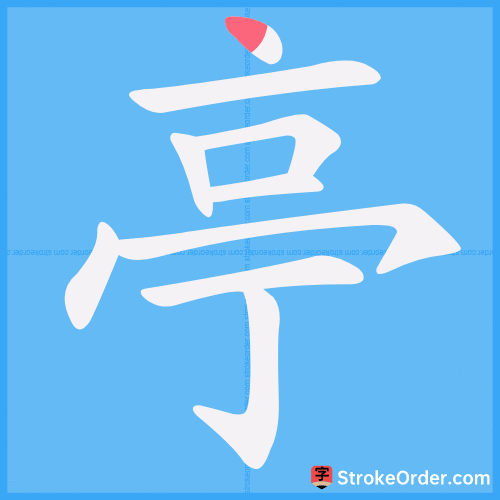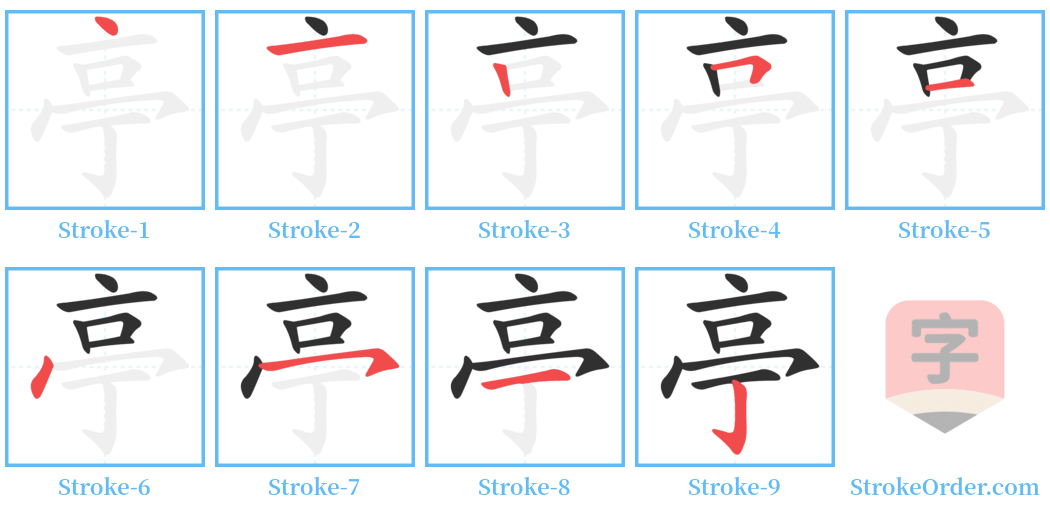亭 Stroke Order
Animated Stroke Order of 亭

Stroke Order Diagrams for 亭

Step-by-Step Handwriting Guide for 亭

Learn to Write Chinese Characters with Video Tutorials
Watch the video of writing the Chinese character "亭", learn the correct stroke order (笔顺) of the character "亭", and master the standard way of writing the character "亭".
Free Printable Handwriting Practice with Stroke Order: 亭
Printable Writing Practice Worksheet of "亭" in Portrait Orientation (Tian Zi Ge)

Printable Writing Practice Worksheet of "亭" in Landscape Orientation (Tian Zi Ge)

Information of 亭
Pinyin
tíng
Radical
亠
Strokes
9 strokes
Usage
★★★★★
Definition
pavilion
亭 (tíng)
1. A building with a roof and no walls, used for resting, often found by the roadside or in gardens; e.g., a cool pavilion, a peony pavilion.
2. A relatively simple small building.
3. Moderate and balanced.
4. Correct and appropriate; e.g., noon (正午, zhèngwǔ).
亭 (tíng)
1. The primary meaning: an ancient public building set by the roadside for travelers to rest.
2. Also refers to a post house (驿亭, inn).
3. Examples: postal pavilion (亭邮), residents near the pavilion (亭民), office of the pavilion (亭寺), lodging at the pavilion (亭舍), lodging inn (亭传), postal station (亭置), post pavilion (亭驿).
4. Pavilion: a structure that is roofed but without walls, often in gardens or beside roads.
5. A sentry box set at the frontier to observe enemy movements.
6. A small house resembling a pavilion (如亭子的小房子, kiosk).
7. A mountain pear.
8. A grassroots administrative unit during the Qin and Han dynasties.
亭 (tíng)
1. To rear or nurture.
2. Examples: nurturing (亭育), cultivation (亭毒).
3. To stop, same as "停" (stop).
亭 (tíng)
1. Moderate and well-balanced.
2. Examples: balanced (亭匀).
3. Straight; standing or upright positions.
4. Examples include: erect (亭立), tall and elegant (亭亭秀秀), gracefully walking (亭亭款款), standing tall (亭亭植立), proper and suitable (亭亭当当), and graceful posture (亭亭袅袅).
5. Right (正).
Input Method for 亭
Pinyin
ting2
Wubi
ypsj
Cangjie
yrbn
Zhengma
sjwa
Four Corner
00201
Unicode
U+4ead
Same Pronunciation Characters